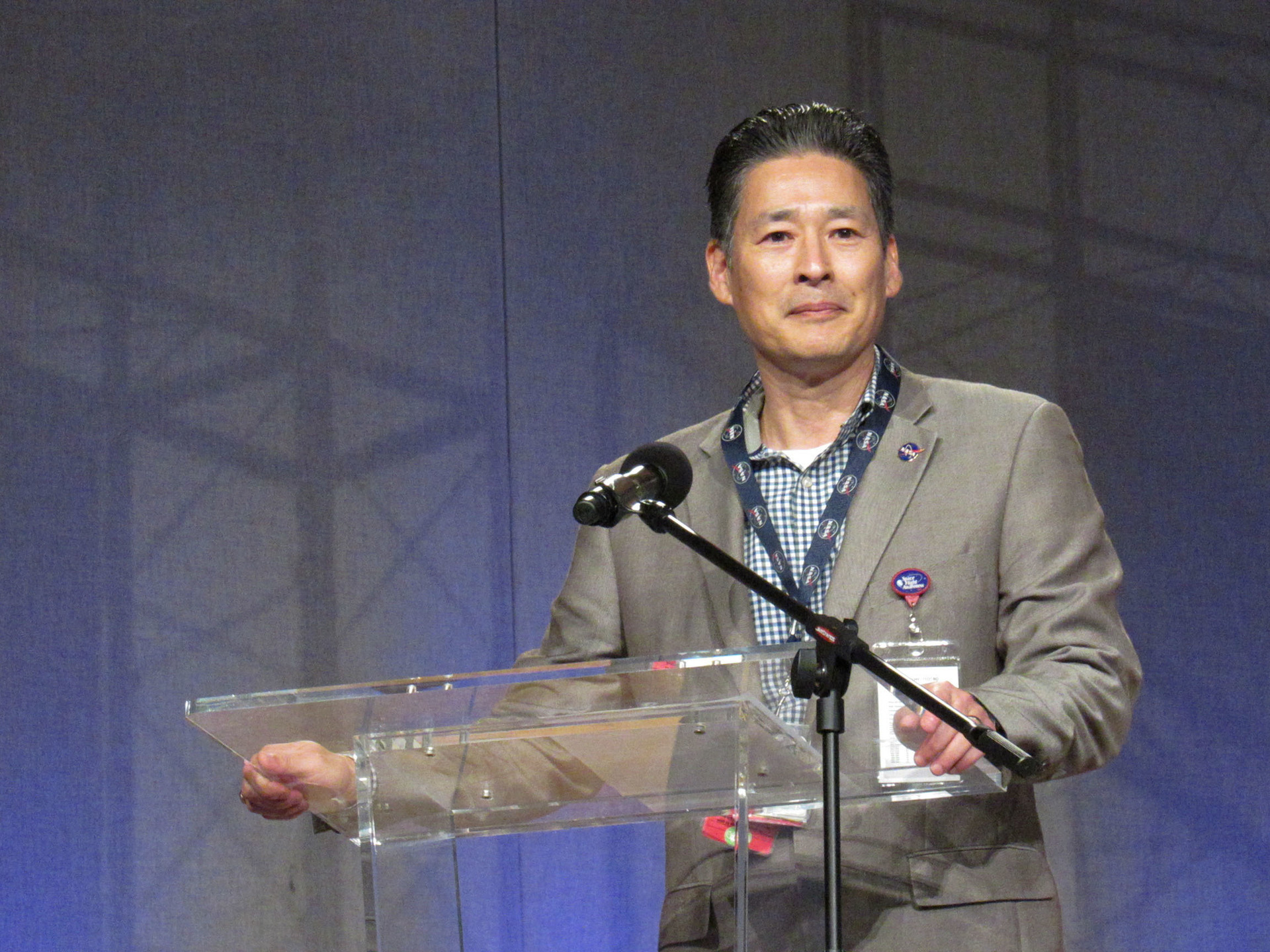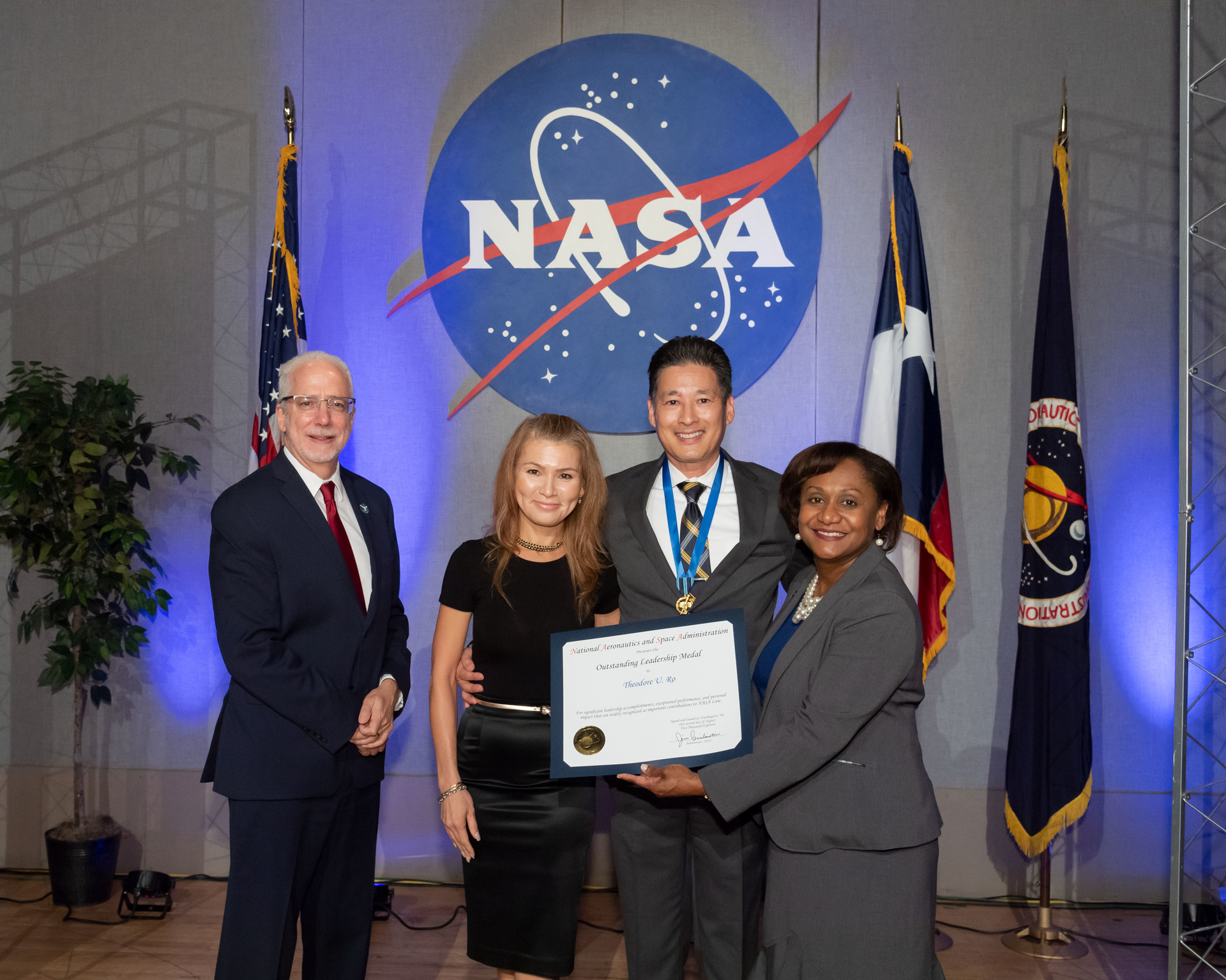Roundup Presents: The Directors Series (AL)
The Laws of Risk Leadership
Ted Ro is hardly the typical attorney. He came to NASA’s Johnson Space Center as an engineer and spent more than 15 years working in technical organizations, including the Mission Operations Directorate, International Space Station Program Office, and Technology Transfer Office, before returning to school in the early ‘90s to study law during evenings and weekends.
After graduating with a law degree, Ro eventually became an intellectual property attorney at Johnson. From there he went on to serve as Johnson’s Deputy Chief Counsel and in 2019 he was named Johnson’s Chief Counsel — a role that serves as an adviser to center leadership and guides the JSC Legal Office.

Ro speaking at the 2019 NASA Legal Conference.
As chief counsel, Ro has leveraged his unique background in mission operations to bring a mission-focused approach to the legal office.
“We have to be willing to change how we operate to make NASA’s goals successful,” Ro said. “In 2030, the general public is not going to remember that an attorney provided advice on a contract. What they will remember is landing humans on the Moon and inspiring the world. So, we should have the mindset that our roles need to be done in a way that helps accomplish the mission.”
The JSC Legal Office is responsible for ensuring that NASA is compliant with a wide range government regulations and agency policies, from ethics training and conflict resolution to procurements and Space Act Agreements.
Joining the legal office after spending time in the technical realm, Ro noticed that compliance duties were often at odds with mission success. Clients frequently required expedited legal advice to keep programs on schedule, but issuing a quick decision was a challenge as the compliance mindset required Johnson’s attorneys to spend time to critically assess every question based on a unique set of facts — no matter whether it was simple or complex.
Recognizing that not every problem demands a complex solution, Ro saw an opportunity to adopt risk-leadership approaches to transition from a traditional compliance-oriented approach to a more mission-focused strategy that enabled the legal office to work more efficiently.
“As part of the mission-support structure our reason for existing is to enable mission success,” Ro said. “We understand NASA has monumental goals and faces numerous external environmental challenges and we need to be constantly willing to change our business strategy in order to support the mission.”
To make the office more responsive to stakeholders, Ro’s team designed a decision-making matrix that uses proportionality to balance timeliness of response with rigorous legal assessment by integrating the probability of negative consequences into the decision-making process when considering risk.
“To an attorney, risk can solely mean negative consequences, but as an engineer or scientist, risk is probability multiplied by consequence,” Ro said. “Risk management requires an evaluation of the potential benefits against negative risk and identifying risk mitigation actions to reduce probability. Every action has potential benefits, a legal risk, and a complexity, but it was the probability component and potential benefits that attorneys may not consider.”
Instead of strictly analyzing negative consequences in the legal process, which often slowed down the decision-making process, Ro challenged his team to introduce probability into the equation. For example, if a legal issue is highly complex but carries a low risk, Ro wants his team to favor quick responses over rigorous analysis.

The success implementing daring changes to the legal office results in Ro receiving an Outstanding Leadership Medal from Johnson Center director Mark Geyer.
Proportionality has enabled the office to set a goal to decrease its response time by nearly 40-percent, permitting mission-focused tasks to move forward more quickly with shorter wait times for a legal opinion.
“The notion of proportionality wasn’t a hard sell to my team,” Ro said. “My team is a typical Johnson team comprised of highly skilled, creative, and enthusiastic individuals. They get it. They are willing to look for new opportunities and practice approaches to achieve mission success.”
The culture shift from compliance to mission has not only improved the response time for the office inspired the attorneys to develop and rapidly adopt innovative solutions.
“Across the board, we need to be willing to change our mentality and use daring techniques, such as risk leadership, to get to the Moon by 2024,” Ro said. “It may mean accepting more risk, but we have to do it smart, where it makes sense and with our eyes wide open. Every little bit helps; time is a luxury we simply don’t have.”
A prime example of risk leadership is the use of a contracting method called a Broad Area Announcement (BAA), which NASA is using to award contracts more quickly. BAA is a tool that allow the government to request scientific or research proposals from private firms and is proving vital for Artemis and low-Earth orbit (LEO) Commercialization-related initiatives such as the Habitat and Logistics Outpost (HALO) module and Commercial Destination Development in LEO.
BAAs allow NASA to select a contract in a matter of approximately 3-4 months rather than 18-24 months, which is key to landing astronauts on the Moon by 2024, but the BAA has also challenged the legal team to learn the complex regulations of this contracting mechanism in a short period of time to ensure compliance.

On Halloween, the legal office dressed up as the Johnson mission statement: Dare. Unite. Explore.
The legal office is also using risk leadership approaches to respond to data rights issues in the wake of an increased use of public-private partnerships. The office developed innovative approaches to balance a contractor’s ability to protect its intellectual property with NASA’s security requirements. These approaches have already been implemented in LEO Commercialization and Extravehicular Activity (EVA) Suit procurements and are being considered for other Artemis initiatives.
While implementing these changes to the JSC Legal Office has been a culture shift, the team has been extremely successful by leaning into a mission approach and understanding that their role is critical to NASA’s lunar ambitions.
“We bring value to the agency by enabling solutions within our legal authority,” Ro said. “We are challenged every day to be as creative as possible, because NASA demands that. NASA is highly advanced — doing things that no one has done — so we expect that of everyone across the board.”
With this mindset and a visionary leader in Ro, Johnson’s Legal Office is creating waves across the agency and innovating NASA’s path to the Moon.
Noah J. Michelsohn, Johnson Space Center

Ted Ro is chief counsel at NASA's Johnson Space Center . This story is part 18 of The Directors Series, highlighting Johnson’s mission of Dare. Unite. Explore. Stay tuned for stories from each directorate and find previous stories on the directors website.








